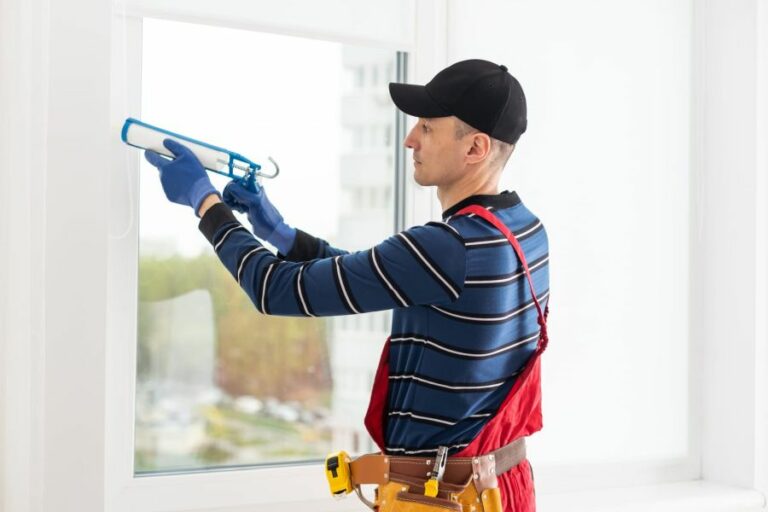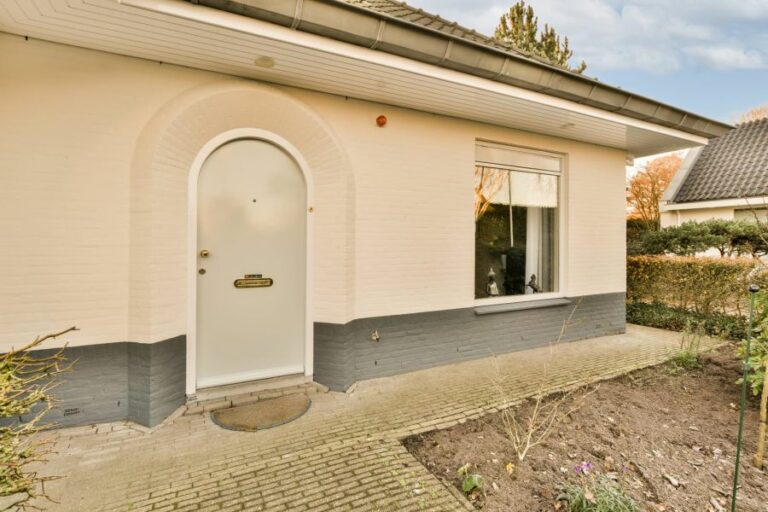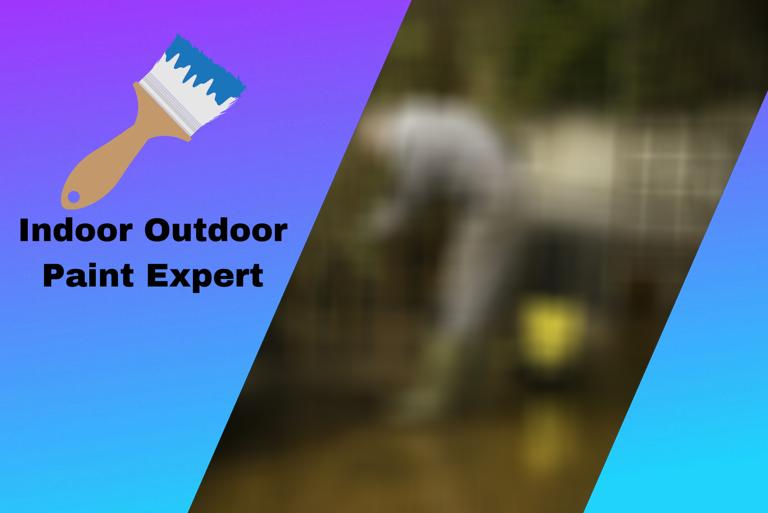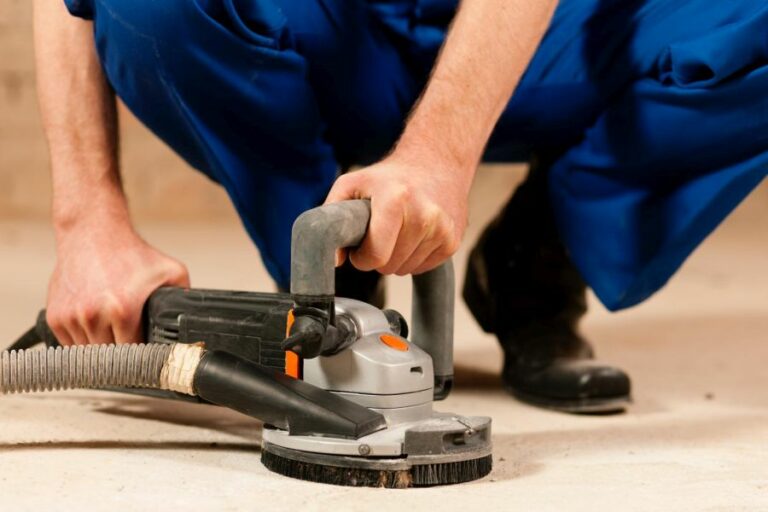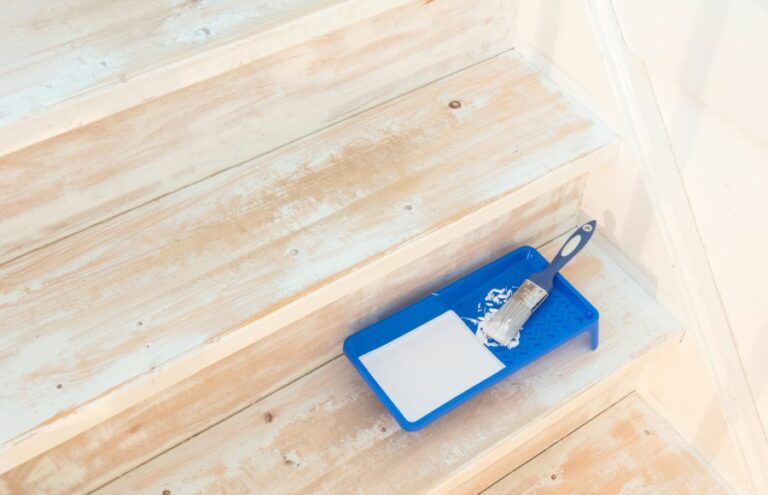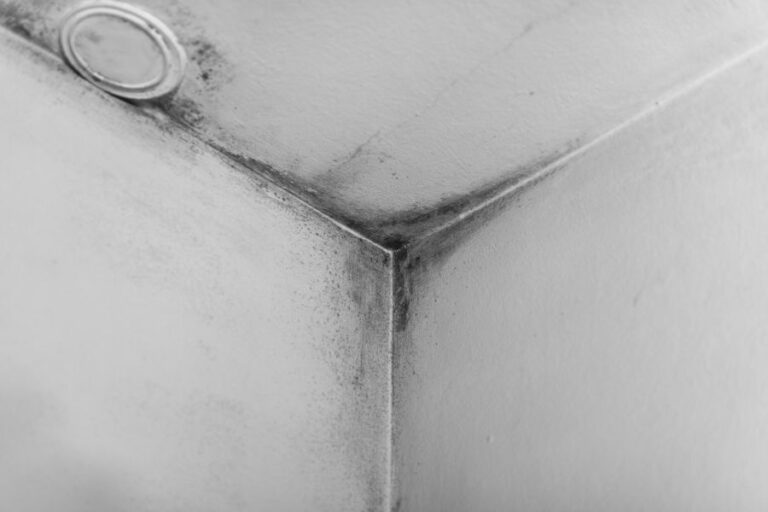Effective Chemical Cleaning For Exteriors. What Pros Say
Nothing beats a thorough and effective chemical cleaning when it comes to maintaining the pristine appearance of your home or business’s exterior. Over time, dirt, grime, and other contaminants can accumulate on surfaces, detracting from their overall aesthetics and potentially causing damage. Finding the right chemical solution and technique is crucial for protecting investment and boosting curb appeal.
Effective chemical cleaning for exteriors:
To effectively clean exterior surfaces, choose appropriate chemicals considering the type of surface, environmental impact, and effectiveness. Some recommendable cleaners include trisodium phosphate, sodium hypochlorite, and potassium hydroxide. Dilute the chemical and apply using the manufacturer’s recommended method while using personal protective equipment. Finally, follow a methodical cleaning process and avoid common mistakes for a successful result.

Discover the secrets to a spotless exterior through our in-depth discussion on effective chemical cleaning methods. Peel back the layers of dirt, grime, and buildup with ease! Read on to unveil a cleaner, fresher facade for your property, guaranteed to leave a lasting impression.
Contents
- 1 Superior Exterior Chemical Cleaning Solutions
- 2 Top House Exterior Cleaning Products
- 3 Most Efficient Chemicals for Cleaning Surfaces
- 4 Ideal Chemicals for Pressure Washing Houses
- 5 Optimal Methods for Outdoor Building Cleaning
Superior Exterior Chemical Cleaning Solutions
• Choosing the Right Chemicals
Selecting the appropriate chemicals for exterior cleaning is crucial to ensure a successful and safe cleaning process. I recommend considering the following factors when choosing chemicals for exterior cleaning:
- Type of Surface: The chemical you select should be appropriate for the material of the exterior surface. Some chemicals may be too harsh for certain surfaces, while others may not be strong enough. For example, masonry surfaces may require a different chemical cleaner than metal or glass surfaces.
- Environmental Impact: Choose environmentally-friendly chemicals that are biodegradable and do not harm plants or water sources. Many cleaning products are specifically labeled as eco-friendly or green.
- Effectiveness: Look for a proven and effective chemical cleaner that can efficiently remove dirt, grime, mold, algae, and other contaminants from the exterior surface.
With these factors in mind, some recommendable chemical cleaners for exterior surfaces include trisodium phosphate (TSP), sodium hypochlorite, and potassium hydroxide, among others.
However, each cleaning project is different, so be sure to consult the recommendations from the chemical manufacturer and the surface material’s specifications.
• Dilution and Application
Once you have chosen the right chemical cleaner for the exterior surface, it is essential to determine the correct dilution and application method. These instructions can usually be found on the chemical’s label or provided by the manufacturer.
- Dilution: Diluting the chemical cleaner with water is critical to its effectiveness and safety. Too strong a solution may harm the surface or surrounding vegetation, while too weak may not adequately clean the exterior. Always follow the manufacturer’s recommendations for proper dilution.
- Application: There are various methods for applying chemical cleaners to exterior surfaces, such as spraying, brushing, or pressure washing. The optimal technique will depend on the surface material, size of the area being cleaned, and the specific chemical being used. Always adhere to the manufacturer’s instructions for the application method.
• Personal Protective Equipment (PPE)
Using adequate personal protective equipment (PPE) is essential to ensure your safety when working with potentially hazardous chemicals. The following items are recommended when handling and applying chemical cleaners:
- Goggles: Protect your eyes from any potential chemical splashes or inadvertent contact with the cleaner.
- Gloves: Wear chemical-resistant gloves to safeguard your hands from direct contact with the cleaning solution.
- Clothing: Long sleeves, pants, and closed-toe shoes are advised to minimize skin exposure to the chemical cleaner.
- Respirator: If working with chemicals that emit strong fumes or in a poorly ventilated area, consider wearing a respirator mask designed for chemical exposure.
• Implementing a Cleaning Process
With the appropriate chemicals, dilution, application method, and PPE in place, you are ready to implement a thorough and effective exterior cleaning process. The following steps can help guide you in cleaning most exterior surfaces:
- Preparation: Clear away any loose debris, dirt, or dust from the exterior surface using a broom or brush.
- Wet the Surface: Dampen the surface with water, particularly if it is porous like concrete or brick. This step helps the chemical cleaner penetrate more effectively.
- Apply the Chemical Cleaner: Use the chosen application method (spray, brush, or pressure washer) to apply the diluted cleaning solution to the entire exterior surface. Be sure to work in sections and leave the cleaner on the surface for the time recommended by the manufacturer.
- Scrub (if necessary): For particularly stubborn stains or buildup, use a brush or appropriate scrubbing tool to agitate the cleaning solution on the surface.
- Rinse: Thoroughly rinse the surface with fresh water to remove the chemical cleaner and any remaining dirt, grime, or contaminants. Repeat this process on each section of the exterior until the entire surface has been cleaned.
- Inspect: Inspect the surface for any remaining stains or buildup. If necessary, repeat the cleaning process for those specific problem areas.
• Avoiding Common Mistakes
To maximize the effectiveness of your exterior chemical cleaning, keep in mind the following in your process:
- Do Not Mix Chemicals: Mixing different chemicals can result in harmful reactions or reduce their effectiveness. Always use a single chemical cleaner according to the manufacturer’s recommendations.
- Avoid Bleach on Non-Porous Surfaces: While bleach can be effective for certain cleaning applications, it may not be suitable for some surfaces, like metal or glass. Be sure to follow the surface material’s recommendations for appropriate chemical cleaners.
- Take Weather Into Account: Cleaning on a windy or rainy day can make for a less effective cleaning process. Choose a calm, dry day for exterior cleaning whenever possible.
By following the practices outlined above, you can achieve an effective, safe, and environmentally-friendly chemical cleaning process for your building’s exterior surfaces.
Top House Exterior Cleaning Products
When it comes to maintaining the appearance and value of your home, cleaning the exterior is just as important as taking care of the interior.
• Pressure Washers: A Powerful Solution for Tough Dirt and Grime
One of the most effective tools for cleaning the exterior of your house is a pressure washer.
These powerful machines use a high-pressure stream of water to blast away dirt, grime, mold, and mildew from a variety of surfaces, including siding, brick, and concrete.
There are various pressure washer options on the market, ranging from electric models to gas-powered machines with higher pressure capabilities. When selecting a pressure washer, it’s essential to consider the surface you’ll be cleaning and your home’s specific needs.
Expert Recommendation: For most residential applications, an electric pressure washer with a pressure rating of 1,300 to 1,900 PSI (pounds per square inch) should be sufficient for removing dirt and mildew from vinyl siding, brick, and concrete surfaces.
• Environmentally-Friendly Cleaning Solutions
While pressure washers can remove a significant amount of dirt and grime on their own, using specialized cleaning solutions can help break down tough stains and make the process more efficient. However, it is essential to choose a product that is both effective and environmentally friendly.
Simple Green’s Oxy Solve Total Outdoor Cleaner is a powerful, biodegradable option for cleaning various surfaces, including wood, composite, brick, stone, and more. Combining this cleaner with the force of a pressure washer can make cleaning the exterior of your house more effective and eco-friendly.
Expert Recommendation: When using a cleaning solution with a pressure washer, be sure to follow the manufacturer’s instructions for proper dilution and application. We also recommend testing the solution on a small, inconspicuous area to ensure compatibility with your home’s exterior materials.
• Soft Washing: A Gentler Alternative
Sometimes, a more delicate approach may be required to clean specific surfaces, such as wood siding, stucco, or older brick. In these cases, a technique called soft washing may be more appropriate.
Soft washing involves using a low-pressure flow of water combined with cleaning solutions designed to kill algae, mold, and mildew without damaging the surface. You can purchase a soft washing system or use specialized attachments that work with your pressure washer to reduce the pressure.
Expert Recommendation: For soft washing, we recommend using a product specifically formulated for this purpose, such as Wash Safe Industries Roof Wash. This cleaner is designed to remove stains and debris gently while being safe for plants and the environment.
• Window Cleaning: Streak-Free Solutions for a Sparkling View
Cleaning your home’s windows is an essential part of maintaining your house’s curb appeal. Several specialized window cleaning products are available, but one of the most tried and true options is a simple mixture of water and white vinegar in a 1:1 ratio.
Spray the vinegar solution onto your windows and use a soft, lint-free cloth or squeegee to wipe away dirt and grime. If the windows are particularly dirty, you may need to rinse with water before applying the vinegar solution.
Expert Recommendation: For best results, we suggest using a squeegee to remove the vinegar solution, working from the top down, and wiping the squeegee blade clean between strokes. This technique helps ensure a streak-free shine on your windows.
• Maintenance Tips for Long-Lasting Results
Once you’ve successfully cleaned the exterior of your home, implementing a regular maintenance schedule will help keep your home looking fresh and well-kept. Here are some expert tips for maintaining your home’s exterior:
- Regularly inspect your home’s siding, gutters, and roof for signs of damage or areas where dirt and debris accumulate.
- Keep landscaping trimmed back from the house to prevent mold and mildew growth.
- Clean areas prone to algae, mold, and mildew growth using an environmentally-friendly solution and soft washing techniques.
- Schedule regular gutter cleanings to prevent water damage and unattractive clogs.
- Clean windows at least twice a year or as needed to maintain a clear view and pristine appearance.
By following these expert tips and using the best products available, you can achieve and maintain a beautifully clean home exterior that reflects your pride in homeownership.
Most Efficient Chemicals for Cleaning Surfaces
In the world of cleaning and sanitation, professionals and homeowners alike are often in search of the most effective cleaning chemical. With so many options available, it can be challenging to find the one that is not only efficient but also safe to use.
• Criteria for Evaluating Cleaning Chemicals
Before we delve into the various cleaning chemicals, let us first understand the criteria used to evaluate their effectiveness.
– Efficacy
The primary criterion for assessing the effectiveness of a cleaning chemical is its ability to remove dirt, grease, grime, and stains from various surfaces. Beyond that, it should also demonstrate germ-killing capabilities, especially for critical cleaning environments such as hospitals and kitchens.
– Safety
The safety aspect of a cleaning chemical should not be ignored. Ideally, the chemical should be non-toxic and non-corrosive, posing no health risks to users or the environment.
– Versatility
A useful cleaning chemical should work effectively across a wide array of surfaces and materials. This versatility allows for efficient use and reduces the need for multiple specialty cleaners.
– Cost-effectiveness
The cost of a cleaning chemical is also essential when deciding its effectiveness. A good cleaning chemical should provide excellent results without breaking the bank.
• Key Cleaning Chemicals and Their Applications
1. Hydrogen Peroxide
Hydrogen peroxide is an effective disinfectant and sanitizer commonly used in households and medical facilities. Its germ-killing capabilities include bacteria, viruses, and fungi. In addition to its disinfecting properties, hydrogen peroxide effectively removes stains, especially those caused by organic materials.
Pros
- Environmentally friendly
- Effective at low concentrations
- Removes stains and odors
Cons
- Can bleach fabrics, carpets, and upholstery
- Loses its potency when exposed to light or air
2. Sodium Hypochlorite (Bleach)
Sodium hypochlorite, more commonly known as bleach, is a powerful cleaning chemical used for various purposes. It is highly effective as a disinfectant, sanitizing surfaces and eliminating harmful microorganisms such as bacteria and viruses.
Pros
- Affordable and widely available
- Highly efficient disinfectant
- Removes stains and whitens surfaces
Cons
- Highly corrosive and may damage some surfaces
- Toxic if ingested or inhaled
- Can cause respiratory issues when used in enclosed spaces without adequate ventilation
3. Quaternary Ammonium Compounds (Quats)
Quaternary ammonium compounds, or quats, are a group of chemicals commonly found in household and commercial cleaning products. They are primarily used for their disinfecting and sanitizing properties.
Pros
- Effective in killing a broad spectrum of germs and microbes
- Non-corrosive and safe for most surfaces
- Odorless and usually colorless
Cons
- Relatively expensive compared to other cleaning chemicals
- May cause skin, eye, or respiratory irritation in some individuals
- Not as effective in removing stains as other cleaning agents
4. Alkaline Cleaners
Alkaline cleaners, such as sodium hydroxide or potassium hydroxide, effectively remove grease, grime, and organic soils from surfaces. These cleaners are mainly used in commercial and industrial settings for heavy-duty cleaning tasks.
Pros
- Excellent grease and soil removal capabilities
- High efficiency in breaking down organic materials
Cons
- Highly corrosive and may damage some surfaces
- May pose risks to human health and the environment if not used and disposed of correctly
• Recommendations
Based on the characteristics and applications explored above, hydrogen peroxide stands out as a top contender for the most effective cleaning chemical.
It offers efficacy in disinfecting, sanitizing, and stain removal while being environmentally friendly, relatively safe, and versatile. Its main drawback of potential bleaching can be mitigated through dilution and careful application.
However, it’s important to note that the most effective cleaning chemical for your specific needs may differ. Assess each cleaning situation based on surface type, level of sanitation required, and other relevant factors to select the appropriate cleaning agent.
For heavy-duty cleaning tasks or unique situations, you may want to consider specialized cleaning chemicals.
Ideal Chemicals for Pressure Washing Houses
Cleaning the exterior of a house is essential for maintaining its appearance, preventing damage, and improving curb appeal.
Pressure washing is an efficient method to achieve a thorough cleaning, but the result is heavily influenced by the chemicals used in the process. Selecting the best chemical for the job is crucial to ensure that your home is left pristine and undamaged.
• The Importance of Choosing the Right Chemical
Using the appropriate chemical in a pressure washing session is vital for several reasons:
- Efficiency: The best chemical can quickly remove dirt, stains, and organic growth, such as algae and mildew.
- Safety: A suitable chemical will not harm the environment, people, and pets.
- Surface Protection: A good chemical will not damage the house’s surfaces or strip away its protective coatings.
Based on these factors, this article examines the best options available in the market, recommending expert, tried-and-tested solutions.
• Recommended Chemicals for Pressure Washing a House
– Oxygen Bleach (Sodium Percarbonate)
- Why it’s the best: Oxygen bleach is both effective and environmentally friendly. It breaks down into oxygen, water, and soda ash, which means it will not harm plants or gardens. Oxygen bleach is also non-toxic, ensuring it is safe for pets and children.
- Best for: Wooden surfaces, vinyl siding, and other common exterior house materials.
– TSP (Trisodium Phosphate)
- Why it’s the best: TSP is a powerful cleaning agent that can easily remove tough stains and grime. It is effective at removing mold and algae, preventing regrowth over time.
- Best for: Painted surfaces, concrete, brick, and stucco.
- Caution: TSP may be harmful to plants and gardens, so make sure you cover or thoroughly rinse those areas during the pressure washing process.
– Bleach
- Why it’s the best: Bleach, specifically sodium hypochlorite, is an effective chemical for removing mold, mildew, and algae rapidly.
- Best for: Driveways, concrete surfaces, and non-painted brick.
- Caution: Bleach can cause damage to plants and some house materials. Use with caution and ensure proper dilution.
– Commercial Pressure Washing Solutions
- Why they are the best: There are numerous commercial pressure washing solutions available that are specifically tailored for house washing. These products often contain a combination of the aforementioned chemicals, combined for optimal performance and safety.
- Best for: Various house surfaces, depending on the specific product.
- Note: Always read the labels to understand the product’s intended use, safety precautions, and dilution instructions.
• Tips for Successful Pressure Washing
- Always test the solution on a small, inconspicuous area before applying it to the entire house.
- Follow the manufacturer’s instructions for the appropriate dilution ratio.
- Rinse the chemical solution off the house thoroughly to avoid residual damage or discoloration.
- Ensure the pressure washer is set to the correct pressure to avoid damage to the house’s surface.
- Wear protective gear, such as goggles and gloves, when handling chemicals and operating the pressure washer.
- Clean and store the pressure washer and accessories properly after use.
In conclusion, selecting the best chemical for pressure washing your home is essential for a successful cleaning session. Oxygen bleach, TSP, bleach, and commercial pressure washing solutions are among the most effective and widely recommended options.
Always consider factors such as surface material, environmental impact, and human and pet safety when choosing the best chemical for your home. Adequate preparation, proper equipment use, and the right chemicals will result in a beautifully cleaned exterior that stands the test of time.
Chemical | Description | Benefits |
|---|---|---|
Sodium Hypochlorite (Bleach) | A common cleaning and sanitizing agent used in the pressure washing industry. | Effective in cleaning exteriors, removing mold and mildew, and it sanitizes surfaces. |
Sodium Percarbonate | A powdered form of hydrogen peroxide and soda ash, known as oxygen bleach. | Eco-friendly, effective in cleaning various surfaces, and it brightens wood without bleaching. |
Trisodium Phosphate (TSP) | A heavy-duty cleaner that can be mixed with bleach for increased effectiveness. | Potent cleaner, effective in removing stains, grease, and mildew, and it can be used in various cleaning tasks. |
Non-toxic (Plant-based) Cleaners | A variety of products that are derived from natural ingredients instead of harsh chemicals. | Eco-friendly, safe for plants and pets, and they’re effective in cleaning various surfaces. |
Vinegar | A natural and affordable cleaning agent that’s effective in removing stains, mildew, and grime. | Eco-friendly, safe for plants and pets, affordable, and versatile in cleaning various surfaces. |
Optimal Methods for Outdoor Building Cleaning
Maintaining a clean exterior is crucial for any building, as it not only enhances its aesthetic appeal but also helps in preventing structural damage from various factors.
• Pressure Washing: The Most Popular Method
Pressure washing is a highly effective technique for cleaning various surfaces in a short amount of time. This method involves using a high-pressure water sprayer to blast away dirt, mold, grime, and other contaminants that have accumulated on the exterior of a building.
Pressure washing can be used on various surfaces such as concrete, brick, and stucco, and even on delicate materials (with proper care).
Benefits of Pressure Washing:
- Fast and efficient cleaning process
- Removes even the most stubborn dirt and grime
- Helps eliminate algae and molds that can cause structural damage
Recommendation: It is advisable to pressure wash your building exterior at least once a year, depending on your location and the level of pollutants in your area.
• Soft Washing: A More Gentle Approach
Soft washing is an alternative to pressure washing, using a lower-pressure water stream along with environmentally-friendly cleaning detergents to gently wash away dirt and contaminants from the building exterior.
This method is preferred for delicate surfaces such as wood, painted surfaces, or materials that can be damaged by high-pressure water.
Benefits of Soft Washing:
- Safe for delicate surfaces
- Effective in removing dirt without causing damage
- Environmentally friendly
Recommendation: Consider soft washing when dealing with fragile or historic building exteriors that might be damaged through pressure washing. Always consult a professional when unsure about the appropriate cleaning method for your building exterior.
• Manual Cleaning: The Traditional Approach
For smaller exterior surfaces or for areas that are hard to access, manual cleaning might be the most suitable option. This method involves using brushes, scrubbers, and cleaning solutions to remove dirt and grime.
While manual cleaning can be time-consuming and labor-intensive, it allows for more targeted and careful cleaning.
Benefits:
- Precise cleaning for hard-to-reach areas
- Suitable for delicate building materials
- No specialized equipment required
Recommendation: Manual cleaning can be a suitable option when dealing with small or intricate building exteriors or when performing maintenance cleaning in between more thorough pressure or soft washings.
• Chemical Cleaning: Tackling Tough Stains
Chemical cleaning involves the use of specialized chemical solutions, such as detergents, degreasers, or solvents, to remove stubborn dirt, grease, or stains that cannot be removed by pressure washing or manual cleaning.
This method should be done by professionals as improper handling or application of chemicals might cause damage or discoloration to the building exterior.
Benefits:
- Effective in removing stubborn stains and grime
- Can address specific cleaning problems
- Restores the building exterior to its original appearance
Recommendation: Chemical cleaning should be reserved for situations that demand targeted stain removal or when other cleaning methods are ineffective. Always consult an experienced professional for guidance on the proper use of chemicals for cleaning purposes.
• Preventive Measures: Keeping Your Building Exterior Clean
Implementing some preventive measures can significantly reduce the need for frequent exterior cleaning and will make the process easier when it is required.
Suggestions for Preventive Measures:
- Regularly trim surrounding vegetation to avoid dirt and dampness accumulation
- Conduct routine inspections for signs of algae or mold growth
- Quickly address any leaks or drainage issues that could lead to water damage
• Final Thoughts
Selecting the most appropriate cleaning method for your building exterior depends on various factors, such as the materials, size of the area, and type of contaminants. Typically, a combination of methods will yield the best results, ensuring a thorough yet gentle cleaning process.
When in doubt, consulting with an experienced cleaning professional is always the best course of action to ensure that the building exterior is cleaned using the safest and most effective methods.
By regularly maintaining and cleaning a building’s exterior, you can preserve its structural integrity, prolong its lifespan, and enhance its overall appearance.
Cleaning Method | Description |
|---|---|
Pressure Washing | Using high-pressure water spray, it effectively removes dirt, mold, grime, and other contaminants from the building’s surface. |
Soft Washing | Approach that uses low-pressure water mixed with a cleaning solution to gently clean the exterior surfaces without damaging the materials. |
Steam Cleaning | Uses hot steam to break down dirt, grease, and grime on the building’s exterior surfaces, providing a deep clean without the use of harsh chemicals. |
Sponge Cleaning | Using a large sponge and mild soap solution to clean the building’s surface, suitable for delicate materials like natural stone or historical buildings. |
Applying specialized cleaning agents to dissolve tough stains and contaminants on the building’s exterior. Effective for removing rust, calcium deposits, and other hard-to-remove stains. |

